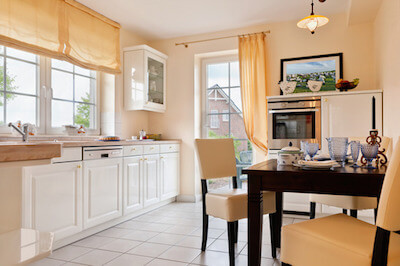So you’ve purchased a charming little bungalow and can’t wait to let your creative juices flow. You have big plans for the kitchen, the bedroom, the bathroom, even the attic will become something grand in the coming months and years.
And while your new home has a certain allure that comes from buying it from a family that lived in it for decades, you know it will become so much more with a little elbow grease and TLC.
Let the projects begin!
But wait. What are the risks? While that vinyl flooring gives the kitchen an old-fashioned flair, there might be quality wood underneath screaming to come to light. Why not peel up the old, fraying vinyl tiles and take a look?
In the early 1900s, vinyl became widely used in building and housing materials. A plastic resin manufactured from ethylene and chlorine, the product became sturdy yet flexible, versatile and inexpensive.
Unfortunately they often mixed asbestos into vinyl as well to improve the product’s strength and insulating properties.
Asbestos wasn’t phased out until the 1980s, which means many older homes that have escaped remodeling over the last few decades may in fact have asbestos vinyl somewhere in the house.
If vinyl has asbestos and is in good condition, it doesn’t pose a health risk. Risks are associated with materials that are disturbed, broken or damaged, allowing the fibers to escape. Keep in mind that during its high point, asbestos wasn’t used in vinyl alone; it was also used as part of the adhesive used to attach it to the floor.
If you are considering a DIY project to replace your vinyl and modernize it into something more appealing – laminate for instance – it’s always best to assume manufactured material before the 1990s contains asbestos. Proper personal protective equipment should always be used when handling these materials. And always have a licensed abatement professional remove the material and make sure the space is free of hazardous material and ready to move forward.
Have additional questions? We’d be happy to help you evaluate your vinyl and decide the best way to move forward with new and improved flooring.
